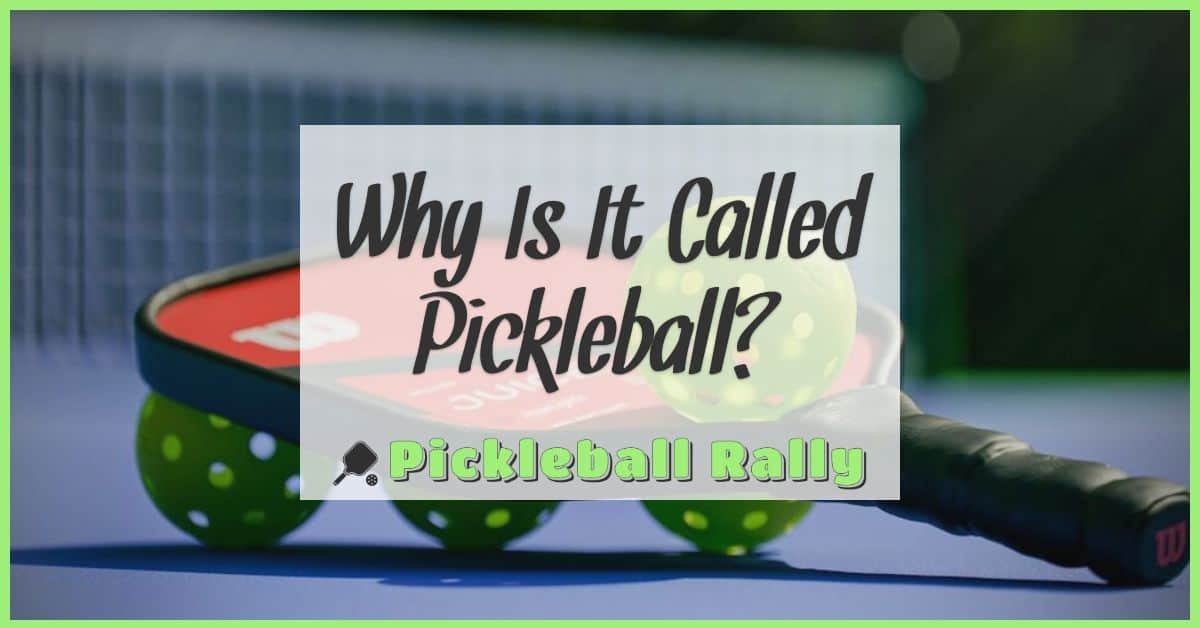Ever wondered when the popular game Pickleball was invented? It’s no secret Pickleball is storming the sports scene. Garnering participants of all ages, from the local park to retirement communities, it’s more than just a passing trend and has captured hearts around the globe. But digging into its history, you might be surprised to uncover its unique origin.
The inception of Pickleball can be traced back to the summer of 1965. Engaging, fun, and accessible, this beloved sport was born amidst the tranquility of Bainbridge Island, Washington. It was there, in a place of stunning beauty, that three fathers set out to create a game that their entire families could enjoy. And they certainly succeeded. The birth of Pickleball sparked a sports revolution that transcends age and skill.
Joel Pritchard, Bill Bell, and Barney McCallum are credited with creating Pickleball. It all started as a simple quest to ensure their kids had a fun, active pastime, but it soon turned into something much more. From this humble beginning, the sport has grown exponentially, now boasting millions of players worldwide and solidifying its place in the hearts of many.
The Birth of Pickleball: A Glimpse Into Its Origins
So, you’ve been bitten by the pickleball bug and you’re eager to know more about it? Fantastic! We’ll start from the very beginning – when pickleball was invented. Pickleball, as enjoyable and widespread as you’d find it now, can trace origins back to the mid-20th century. To be more precise, it was founded in 1965 on Bainbridge Island, a short ferry ride from Seattle, Washington.

In its early inception, pickleball was a simple antidote for boredom. The game’s creators, Joel Pritchard, Barney McCallum, and Bill Bell, found themselves with their families on a lazy summer afternoon and a handful of bored kids. A badminton game was an initial idea, but when faced with the lack of equipment, the innovative group improvised. Rather than sticking with traditional rackets and shuttlecocks, they adopted ping-pong paddles and a perforated ball. They lowered the badminton net to the ground, which gave birth to the game of pickleball and the youths were instantly entertained.
Want more juicy details about the peculiar name? Here you go! One popular but debated story is that the Pritchards had a dog named Pickles who would chase after the ball, which led to the game’s name “Pickle’s Ball”. However, Joan Pritchard, Joel’s wife, shared a different perspective. She referred to the game like the “pickle boat” in crew, where oarsmen were chosen from the leftovers of other boats. Similarly, pickleball was created with parts of other games – badminton, ping-pong, and tennis.
Here’s a quick table to summarize the game’s creation:
| Key People | Year | Location | Reason for Name |
|---|---|---|---|
| Joel Pritchard, Barney McCallum, Bill Bell | 1965 | Bainbridge Island, Washington | Either due to the Pritchard’s dog, Pickles, or the “pickle boat” term in crew |
Before the 1960’s concluded, the trio developed official rules, solidifying pickleball as a legitimate sport. From that moment on, it’s continued to grow and now captivates millions worldwide. Now, when you step onto the court, you’re not just playing a game – you’re part of a rich, fulfilling history.
Notable Figures in the Invention of Pickleball
When you’re diving into the history of pickleball, there are a few key personas you can’t overlook. It’s worth noting that this popular sport was invented in the mid-twentieth century by three forward-thinking fathers from Washington. Their aim was to create an engaging game that their kids could play.
First up, Joel Pritchard, who was not just a sports enthusiast but also a businessman and politician, juggled all these roles with aplomb. Serving as a Lieutenant Governor of Washington, Pritchard had quite the exciting life. He’s mainly celebrated, however, for co-creating pickleball.
Next, we have Barney McCallum. A businessman in his own right, McCallum wasn’t just a driving force behind the inception of pickleball but also played a significant role in spreading awareness about the sport. He even founded the company Pickle-Ball Inc. to promote and distribute the game’s equipment.
Then there’s William Bell, an essential part of the trio. A successful businessman like his companions, Bell’s contribution to the birth of pickleball wasn’t just financial but also ideational.
| Name | Contribution |
|---|---|
| Joel Pritchard | Co-creator; Promoted the sport in political circles |
| Barney McCallum | Co-creator; Founded Pickle-Ball Inc. |
| William Bell | Co-creator; Provided financial and conceptual support |
Sure, the inventors didn’t have a grand vision for pickleball initially, yet they didn’t hesitate to invest their time and resources in this quirky creation. They kept it fun and aimed for something that could keep their children engaged. It’s from this humble beginning that pickleball expanded into the globally recognized sport we know today.
So remember, the next time you’re smashing that wiffle ball across the court, it’s all thanks to Pritchard, McCallum, and Bell – the dynamic threesome who brought pickleball to life.
Timeline: Key Moments in Pickleball’s Early Days
Delving back into the annals of sport, you’ll discover that pickleball, despite its popularity today, has a relatively recent origin. Conceived in the mid-20th century, the game was a product of ingenuity, resourcefulness, and the sheer desire to create fun.
So, what’s the story of pickleball’s early day?
Let’s turn back the clock to 1965. Interestingly, pickleball was not a planned invention, but rather a happy accident. One summer afternoon, on Bainbridge Island near Seattle, three fathers – Joel Pritchard, Bill Bell, and Barney McCallum – invented the game to keep their bored kids occupied. It was a hit from the get-go.
Fast-forward to 1972, the game’s charm didn’t wane, on the contrary, it snowballed. The trio went on to establish the Pickleball Corporation to manage its exponential growth.
1976 was another pivotal year. The first-ever official pickleball tournament was held in Tukwila, Washington. At the same time, a renowned tennis court contractor, Tennis and Track Co., began to build pickleball courts.
Then, in 1984, the USA Pickleball Association (USAPA) was formed. This solidified pickleball as a legitimate sport and further spurred its growth. The USAPA developed a rulebook, sanctioned tournaments, and even launched a website in 2003 for players and fans alike.
Below is a snapshot of the game’s evolution:
| Year | Key Event |
|---|---|
| 1965 | Invention of Pickleball |
| 1972 | Formation of Pickleball Corp |
| 1976 | First Official Tournament |
| 1984 | Establishment of USAPA |
These milestones mark the journey of pickleball, from a spur-of-the-moment invention to an explosive global sport. So, whenever you’re enjoying this game, remember the rich history behind every serve and volley.
The Intriguing Story Behind the Name ‘Pickleball’
Wondering where pickleball got its peculiar name? Let’s dive into this intriguing tale.
Invented in the mid 1960s, pickleball’s naming has two competing narratives. The first account tells a tale involving a sea-faring dog. Owned by the game’s co-creator, Joel Pritchard, the canine companion named ‘Pickles’ had a knack for running off with the ball. According to this story, Pritchard’s family started calling their new game “pickle’s ball”, which eventually got shortened to pickleball.
However, it’s not the only story in circulation. Joan Pritchard, Joel’s wife, offered an alternative explanation. She claimed the name ‘pickleball’ was inspired by the term ‘pickle boat’, an expression from the sport of crew where ‘pickle boat’ refers to a boat with a mixed or unsorted crew, much like the nature of pickleball itself, being a mashup of various sports elements.
Confused about which pickleball origin story to believe? Don’t worry, you’re not alone!
- Story 1: Pickles, the dog, inspired the name.
- Story 2: The name was derived from the sport of crew’s term ‘pickle boat’.
Though the real origin of the name remains debatable, one thing’s for sure. The unusual name has certainly piqued the interest of many and continues to do so. After all, who wouldn’t be curious about a game called pickleball? it’s that sweet bit of mystery that adds a touch of charm to this fun, family-friendly sport!
Regardless of the narrative you choose to believe, it’s clear that pickleball was devised in a spirit of fun and whimsy. This engaging game has grown from its humble beginnings into a widely recognized and enjoyed sport today. So, put on your game face, grab that pickleball paddle, and become part of this ever-growing community that brings together people from all walks of life. Maybe, just maybe, you’ll find your own reason for why it’s called pickleball.
How Pickleball Gained Popularity Since Its Invention
So you’re saying, “Pickleball? That’s relatively new!” Not quite so, my friend. This unique and engaging sport has been entertaining players since the 1960s. Imagine this, you’re going on 60 years of smacking a perforated polymer ball over a net. Sounds quite fun, right?
We didn’t call it “Pickleball” from the onset, of course. Initially, it started as an impromptu game among friends just trying to keep summer boredom at bay. It had its humble beginnings on Bainbridge Island, Washington. Thanks to Joel Pritchard, Bill Bell, and Barney McCallum, they’ve provided us with an interesting athletic pastime.
The sport really started to gain traction in 1972. As more people discovered the game, interest grew simultaneously across U.S. states. By 1990, many states were perpetually”pickled” – reaching all 50 U.S. states. Now, let’s take a look at these numbers that show just how many people have fallen in love with pickleball:
| Year | Pickleball Players in the U.S. |
|---|---|
| 2003 | 20,000 |
| 2010 | 60,000 |
| 2015 | 250,000 |
| 2020 | 3.3 million |
Looking at that table, it’s clear pickleball has had an extraordinary growth rate. It’s not just about the numbers, though. The game caters to all: younger, older, athletic, not-so-athletic. There’s no discriminatory play here.
But how did your favorite sport get its peculiar name? Did you know it’s from the inventor’s dog, Pickles, who loved to chase the balls during the game? Cute, right?
Yes, pickleball has indeed come a long way since its creation. One would hardly believe it came from an old badminton court and whatever sports equipment was available. And this is precisely why you’ll appreciate every thrilling moment; from its haphazard invention to its popular culture cornerstone status.
Isn’t it exciting how far pickleball has come? Now, if you’ll excuse me, there’s a pickleball court calling my name. See you on the court!
The Game’s Evolution: Changes from Inception to Today
When pickleball first sprung into existence in 1965, it was notably different from the game we’ve come to know and love today. Originally, it was a simple pastime invented by Joel Pritchard and his friends to entertain their families. But over time, the game evolved into a popular sport with formal rules and dedicated courts.
Let’s take a closer look at the key moments in its evolution:
- 1965 to 1972: These initial years focused mainly on shaping the game’s baseline rules, similar to badminton. In this phase, participants played in a make-shift court in the Pritchards’ backyard using ping pong paddles and a perforated ball. However, as the sport’s popularity grew, the need for a more formalized ruleset emerged.
- 1973: This marked a turning point for pickleball, with the establishment of the USA Pickleball Association (USAPA), which developed a standardized rule book. It’s also during this year that the first ever pickleball tournament took place.
- 1984 onwards: The sport continued to grow stronger. It wasn’t just about pickup games in backyards anymore. Dedicated pickleball courts started cropping up across the US.
- 2000 till Today: In the digital age, pickleball’s reach spread even wider. There’s been a sharp rise in its global popularity, thanks in part to online communities fostering engagement and international tournaments. The number of dedicated pickleball courts in the US has grown over 600% in the past decade, with an estimated 3.3 million players in the country today.
Here’s a quick snapshot, in numerical terms:
| Year | Milestone |
|---|---|
| 1965 | Inception of pickleball |
| 1973 | Formation of USAPA |
| 1984 | Emergence of dedicated courts |
| 2000 | Sport gathers international renown |
In the last 50 years, not only has pickleball’s rules and equipment seen quite an evolution, but its place in American culture has also shifted noticeably. It’s gone from being a fun backyard diversion to a nationally recognized sport with its own associations and tournaments. The collective effort from the community and its constant adaptability has helped pickleball not only survive, but thrive, making it one of the fastest growing sports in America.
Pickleball’s Impact: Beyond the Game
Pickleball’s invention back in 1965 hasn’t just offered us a new sport to enjoy. It’s reshaped the face of leisure activities and impacted communities internationally in unexpected ways. Surely, you’re not just curious about when pickleball was invented, but also intrigued about its lasting impact, right?
Since its inception, pickleball has been part of America’s sporting legacy, but it’s more than just a game. It’s changed the lives of countless individuals, and the ways it has done so might be surprising. Let’s delve into the less-talked-about influence of this paddleball sport.
One of pickleball’s significant impacts is its contribution to community bonding. Pickleball games often bring together people of all ages in parks, recreational centers, and backyards. It has fostered a spirit of camaraderie and inclusivity, which is crucial in building tight-knit communities. Just imagine the cheers, laughs, and friendly banter exchanged in all those matches!
The game gives senior citizens an outlet to keep active, social, and mentally sharp. For others, it’s a fantastic way to keep fit and enjoy the outdoors. It’s fascinating how a game can bring diverse benefits, isn’t it?
But the influence of pickleball doesn’t stop there. It’s played a part in boosting local economies too. From spending on sporting equipment to rising property values for homes within pickleball-friendly communities, the sport’s popularity has indirect financial impacts. For instance, pickleball tournaments and events draw in tourists, helping local tourism and hospitality sectors.
We can’t forget about its education contributions. Numerous schools across America have introduced pickleball to their physical education programs. This exposure at a young age not only promotes physical fitness among children but also cultivates a passion for the sport.
It’s pretty amazing how far-reaching the impact of a game invented on a makeshift court in Bainbridge Island, Washington can be. Whether it’s community, economy, or education – the footprint of pickleball seems to extend Beyond the Game.
Pickleball across Generations
Evolution can be unpredictable, and so it was with pickleball. Back in 1965, three resourceful dads – Joel Pritchard, Bill Bell, and Barney McCallum invented this game on Bainbridge Island. A game crafted out of sheer boredom has an intriguing tale to tell about its journey across generations.
Pickleball has transcended the generational barriers in an impressive manner. It’s not just for the retirees at Florida, it’s a game that’s been enthusiastically embraced by all ages. The younger generations are picking up their paddles, echoing that pickleball is indeed for everyone.
Now, you’d probably think that there’s a significant difference in the preference for pickleball across various age groups. But here’s the surprise! The ‘Sports & Fitness Industry Association (SFIA)’ reports showed a mere difference of 4% in the participation rates among Gen Z (14%) and Baby Boomers (18%) in 2020.
| Age Group | Participation Rates (2020) |
|---|---|
| Gen Z | 14% |
| Baby Boomers | 18% |
This genuinely inspiring sport has shown to have a universal appeal, how else would you explain its surge among school programs? In less than a decade, there’s been a stunning increase in the pickleball school programs. From 400 programs in 2010, there were over 7000 programs by 2018, an unbelievable growth!
- Stats from 2010 and 2018 are as follows:
| Year | School Programs |
|---|---|
| 2010 | 400 |
| 2018 | 7000 |
In recent years, it’s become evident that pickleball resonates with the younger crowd for its social aspect, just as much as for the physical benefits. It’s clear that pickleball, a sport many considered ‘laid-back’, symbolizes more than meets the eye – sparking connections, bridging generation gaps and fostering a sense of community among people of all ages.
The resilience of pickleball, from its birth in a backyard to becoming a multidimensional sport savored across generations, is truly noteworthy. And with pickleball tournaments attracting the younger demographic, the future is looking brighter than ever, intricately knitting those diverse age fabrics together, one game at a time.
So, never dismiss it as a mere hobby, because this game of dinks and volleys might just amplify your connection with the younger or older generation.
Frequently Asked Questions about Pickleball’s History
So, you’re curious about the invention of pickleball? Well, you’re not alone! Since the sport’s increased popularity, many have wondered about its fascinating history. There are some common questions people often ask, and we’ve got the answers you’re looking for.
You’re probably wondering, “When exactly was pickleball invented?” This sport was hatched during the summer of 1965 by three fathers – Joel Pritchard, Bill Bell, and Barney McCallum. They are known as the founding fathers of pickleball. They initially came up with this intriguing sport to keep their kids entertained during summer.
Wondering about the quirky name of this innovative game? The popular story is that “pickleball” got its name from the Pritchard’s family dog, Pickles, who had a knack for chasing the ball and running off with it. However, it’s also noted by one of the founders, Barney McCallum, that the name came from a term in rowing – “pickle boat.”
Now, you may be curious about how quick the sport spread over the years. The first known pickleball tournament occurred in 1976, and by the mid 70’s, pickleball was being played in all 50 states. The game’s bounce is not to be underestimated, as its popularity has seen a remarkable spread not just in the United States, but worldwide.
Curious about the first pickleball associations? The USA Pickleball Association (USAPA) was founded in 1984 and later on, the International Federation of Pickleball (IFP) was established in 2010.
Below, we’ve compiled a brief timeline to summarize pickleball’s key historic events:
| Year | Event |
|---|---|
| 1965 | The game of pickleball is invented |
| 1976 | The first known pickleball tournament takes place |
| 1984 | The USA Pickleball Association (USAPA) is founded |
| 2010 | The International Federation of Pickleball (IFP) is established |
Alright, you’ve delved into pickleball’s past with the most engaging queries addressed. Now that you’re an expert on its fascinating tale, the next time you play, you’ll have an extra layer of appreciation for the sport’s uniquely rich origins.
Final Thoughts: The Legacy of Pickleball’s Invention
Looking back at the origins of pickleball, it’s fascinating to see how it started as a simple backyard pastime, and rapidly evolved into a globally recognized sport. The toy box beginnings are now a relic of the past, with organized tournaments and a growing base of enthusiastic players catching on rapidly.
Starting in the mid-1960s, you can appreciate how pickleball’s inception offers a tremendous insight into the evolution of leisure activities. Just three dads, bored kids, and dwindling resources—yet what sprouted from those humble beginnings is nothing short of extraordinary.
The birth of pickleball is punctuated with quirks and nuances. Starting with a dog named Pickles, an old badminton court, and a mishmash of equipment from other sports—it’s all just a part of the sport’s legacy.
The essence of pickleball’s invention lies in its ability to adapt, grow, and surprise. It’s a sport that was shaped by necessity, creativity, and the sheer will to have fun. Whether it’s the unexpected rapid rise in popularity across the USA and beyond, or the intriguing name that still raises eyebrows, pickleball never ceases to surprise.
In reflection, the legacy of pickleball’s invention is a testament to the human spirit to innovate, adapt, and above all, enjoy. Remember, it’s not just about being competitive or winning; it’s about having fun and enjoying the moment.
When you play your next game of pickleball, remember its origins and cherish the experience. After all, isn’t that the essence of every sport—creating memories and enjoying every moment?
Here’s to pickleball, a sport with a curious past and a promising future, its legacy will continue to intrigue, charm, and engage generations to come.









